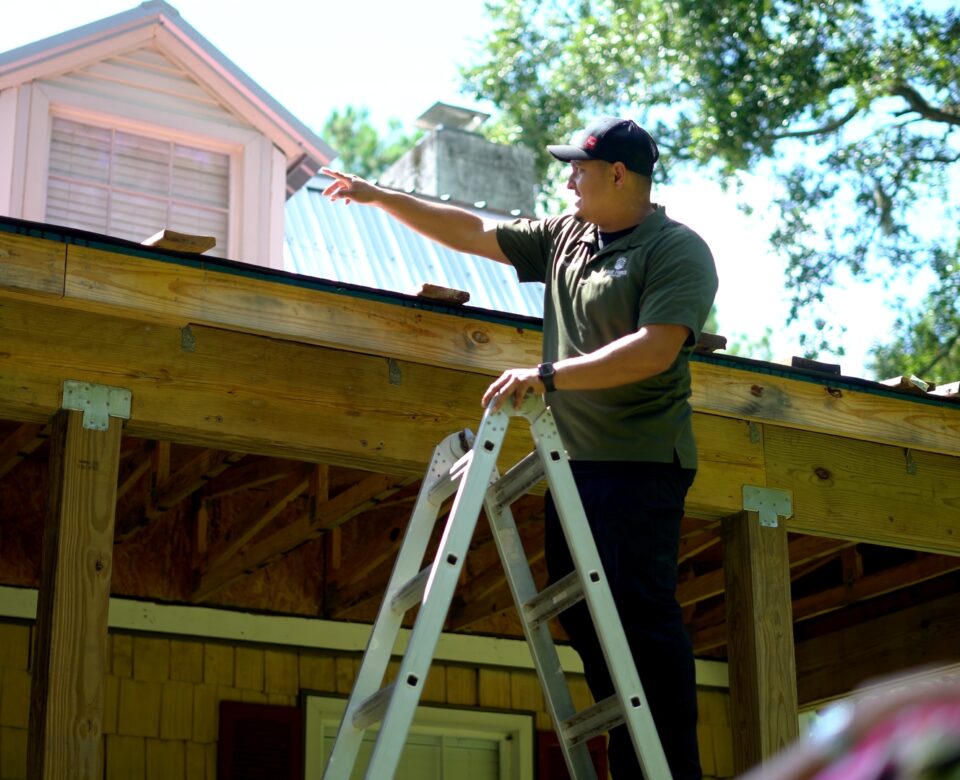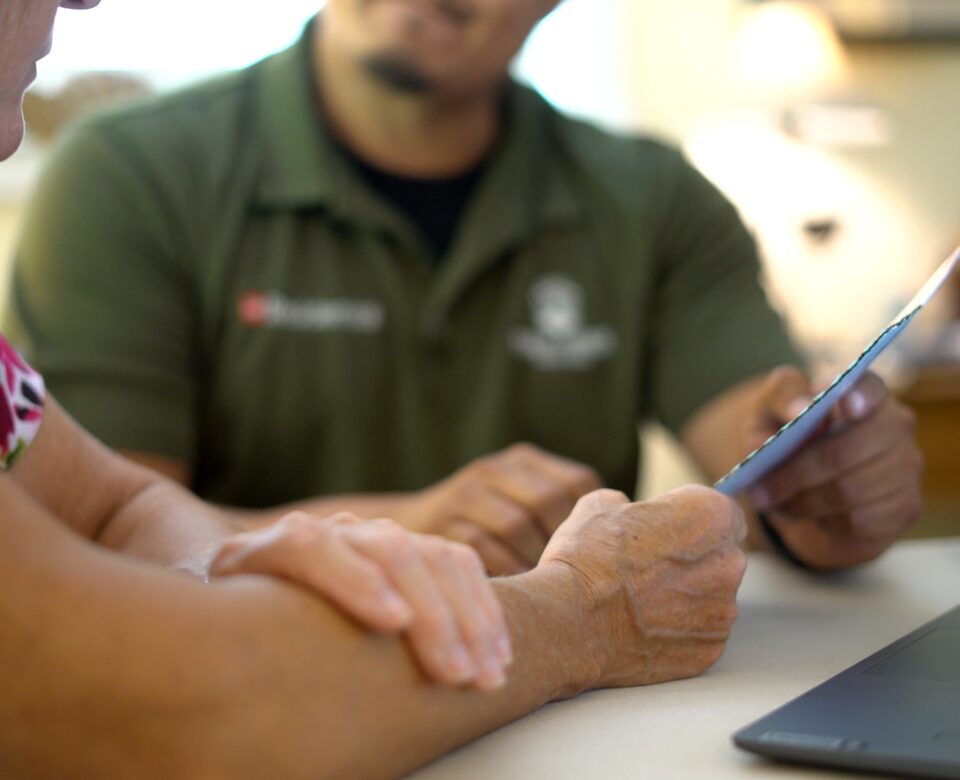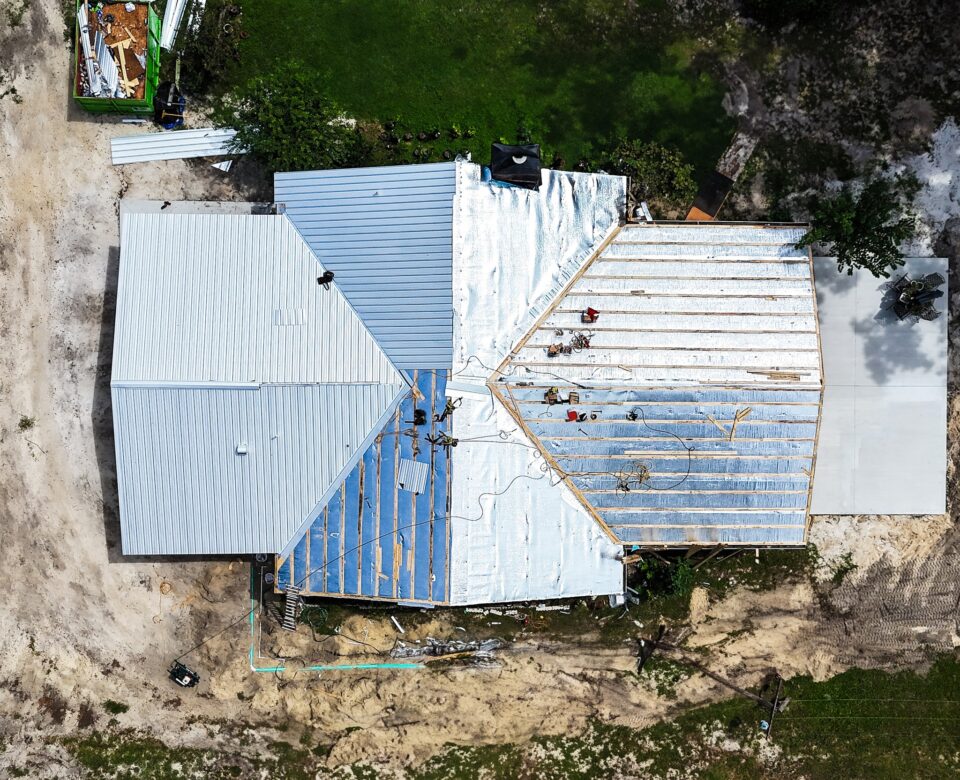
Our Essential Hurricane Preparedness Checklist for Florida
May 29, 2025
What Makes the Best Hurricane-Resistant Roofing Materials?
June 26, 2025
Understanding Hurricane Roof Protection
Importance of Roof Preparation
Making sure your roof is hurricane-ready in Gainesville, FL, isn't just a good idea—it's essential. A sturdy roof is your best defense against storm fury, minimizing destruction and slashing repair bills. Start with a once-over to spot any troubles like loose shingles or faint cracks that might break under storm pressure.
A strong roof is like a mighty shield for your home and family, providing security and comfort. Keep it in tip-top shape with regular inspections, patching up issues fast, and fortifying those places Mother Nature loves to attack. Spend a little now on prevention, and you'll save a bundle later by keeping your walls, furniture, and loved ones safe.
| Activity | Frequency | How Much It Matters |
|---|---|---|
| Inspection | Every 6 months | High |
| Maintenance | When needed | High |
| Debris Clearing | Once a month | Medium |
Common Risks to Roofs During Hurricanes
Hurricanes are no joke for your roof, posing several hazards that can wreak havoc. Knowing the dangers means you can plan to keep it all together.
-
Winds That Blow Hard: These gusts can yank shingles or tiles right off, even ripping away chunks of the roof. If they aren't nailed down tight, they might as well be invitations to disaster.
-
Flying Stuff: Branches, lawn furniture, or anything loose turns into flying missiles, ready to poke holes or break tiles. Trim those tree limbs and secure anything that might take flight.
-
Sneaky Water: Rainwater is sneaky, slipping into any tiny crack it finds. It turns into a major leak if the roof's got pre-existing issues. When the water moves in, your roof might decide to let the rain in, too.
-
Crazy Pressure Drops: Hurricanes bring sudden pressure changes, creating a lift-off effect for your roof, especially if it's not built to strong standards. Best make sure those critic spots are nailed down tight.
For top-notch advice on gearing up for hurricanes, make sure you see our handy hurricane preparedness checklist. You'll find extra tips on hurricane-resistant roofing materials and keeping roof damage at bay with hurricane roof damage prevention.
Stay alert to these risks, and you'll be ready to give your roof the strength it needs to face another hurricane season. Don't wait—be proactive!
Preparing Your Roof
Getting your roof ready is critical to keep your roof in one piece when a hurricane hits. These suggestions can help you ward off potential damage and keep your family safe within the cocoon of your home.
Regular Inspections and Maintenance
Think of roof inspections as doctor's appointments for your home. It's this proactive care that can save you from bigger headaches later. Folks in Gainesville, FL should make it a habit to check their roofs twice a year, especially before and after hurricane season throws its fit.
Here's what you ought to watch for:
- Shingles playing hide and seek
- Gaps in flashing that look suspicious
- Water stains or sneaky leaks
- Gutters and downspouts stuffed like a turkey
Staying on top of repairs nips problems in the bud. And if you're not a ladder person, bringing in the pros for a thorough look-see is a smart move. Good maintenance keeps your roof ready to rumble. You can find more details in our hurricane preparedness checklist to ensure your roof stands tall.
Reinforcing Vulnerable Areas
Some spots on your roof might feel extra nervous when the hurricane rolls in, and giving them a little extra love can make a world of difference.
Ways to toughen up your roof include:
- Fortifying valleys and edges
- Securing any wobbling vents and chimneys
- Installing some sturdy roof bracing
- Tightening seals around skylights and any other nooks
Get your hands on some solid, hurricane-resistant materials to give your roof armor. Check out our resources on hurricane-resistant roofing materials for more ways to shield your castle.
Clearing Debris and Overhanging Branches
Keeping your roof clean isn't just about appearances; it's about staying safe when the skies start getting rowdy.
- Clear off those leaves, twigs, and whatever else decides to land on your roof
- Trim those pesky branches that think they can hang over your home without invitation
- Ensure gutters and downspouts aren’t clogged, so rain flows where it should
Having a roof free of clutter gives you a fighting chance against a hurricane's fury. Covering these bases is part of solid hurricane preparation.
By taking these steps, homeowners in Gainesville, FL can arm their homes for the rough waters of hurricane season. Regular check-ups, a bit of reinforcing, and cleaning up the mess can make sure your roof stays steadfast when the winds start wailing. If you have concerns about insurance, take a look at our guide on hurricane roof insurance claims to cover all your bases.
Upgrading Your Roof for Hurricane Season
Impact-Resistant Roofing Materials
Getting ready for hurricane season? Picking the right roofing materials is key to keeping your house safe. Impact-resistant roofing materials are tough—they can stand up to flying debris and wild winds, cutting back on damage when a storm hits. These materials go through rigorous tests to prove they can take a punch without crumbling.
Common Choices for Impact-Resistant Roofing:
- Asphalt Shingles: They won't break the bank and are pretty good at fending off wind.
- Metal Roofs: Hard as nails and built to last.
- Clay and Concrete Tiles: Can take a beating from both wind and debris.
Want more details? Check out our article on hurricane-resistant roofing materials.
Wind-Resistant Roofing Designs
How your roof is designed can make a world of difference when the wind's howling. Wind-resistant designs aim to keep your roof tightly anchored and the whole structure solid. Here's what you should keep an eye out for:
- Hip Roofs: These have four sides sloping down, making wind pressure spread out evenly.
- Gable Roofs with Extra Support: Add some bracing and hurricane straps to keep them from lifting off.
- Slope and Pitch: Steeper roofs help the wind glide over them instead of ripping them apart.
With these design tweaks, your roof will be a tough cookie when those fierce winds hit. Want to go deeper? Our guide on hurricane roof damage prevention is a good place to start.
Installing Hurricane Straps and Clips
Hurricane straps and clips are like superglue for your roof, keeping it firmly attached to the house so it doesn’t blow away when a hurricane rolls through. These metal connectors give extra muscle by hooking the roof to the walls.
Types of Hurricane Straps and Clips:
- Roof-to-Wall Straps: Tie the roof trusses or rafters to the walls.
- Truss Braces: Add extra strength to the roof trusses.
- Rafter Clips: Pin down each rafter to the top of the wall.
Properly installing these clips and straps can make all the difference when it counts. It's a smart idea to call in a pro to ensure everything's snug and secure.
For more thorough steps on getting your home ready, have a look at our hurricane preparedness checklist.
Putting these upgrades in place means your roof stands a better chance against hurricanes, giving you peace of mind and saving you from hefty post-storm repairs. Got a hurricane on your track and thinking about insurance claims? Our guide on hurricane roof insurance claims might just be what you need.
Emergency Procedures for Your Roof
When hurricanes decide to crash the party, having a plan to protect your roof is like having a superhero in your corner. Let’s dive into some simple yet powerful ways to safeguard your home and keep those storm damages at bay.
Batten Down the Hatches
Think of strong hurricane winds like a giant hand picking up whatever’s lying around. Best move? Keep anything loose from becoming the next high-speed frisbee aimed at your roof.
- Patio Furniture: Toss it in the garage or tie it down like your life depends on it.
- Garden Tools: Lock them up in a shed or bring them indoors.
- Ornaments & Trinkets: Save these beauties by keeping them inside.
Quick Fix Arsenal
Post-storm repairs can feel like trying to sew a button with a spoon, unless you're ready. An emergency tool stash can save the day when you need quick fixes. Here’s what you need:
| Item | What It Does |
|---|---|
| Heavy-duty Tarp | Slap it over leaks or gaping holes |
| Roofing Nails | Hold down tarps and patches so they don’t blow away |
| Hammer | Your trusty nail-driver and material-bonder |
| Caulking Gun | Plug those pesky leaks |
| Sharp Knife | Slice through materials like a pro |
Get everyone in the house to know where the kit lives and test out the tools ahead of time. No stress, all prep.
Get-Outta-Dodge Plan
If the storm gets nasty, knowing how to split is as key as boarding up windows. Planning your moves ahead means a smooth exit when things get wild.
| Step | What You Need to Do |
|---|---|
| Route Map | Have multiple escape routes sorted. You know, just in case. |
| Phone a Friend | Keep your pals and family in the loop about your plan. |
| Safe Havens | Be sure to know where local shelters are and when they open up. |
| Paperwork Pack: Stash your ID, insurance docs and contacts in a waterproof bag, safe and sound. | |
| Kit of Essentials: Load it with snacks, drinks, meds, and first-aid goodies. |
Taking these storm-ready measures helps folks in Gainesville, FL handle weather surprises better. To dive deeper, swing by to check our hurricane preparedness checklist. Explore the info on hurricane-resistant roofing materials and updates on hurricane roof damage prevention. If your roof takes a hit, peek at our steps for hurricane roof insurance claims for a smoother recovery ride.
After the Storm: Roof Assessment
Post-Hurricane Roof Inspection
When a hurricane rips through town, checking out your roof becomes priority number one. Folks in Gainesville, FL ought to give their roof a good once-over to spot any glaring issues. Start with an eagle eye for those sneaky missing shingles, cracked tiles, or other uninvited structural surprises.
| Inspection Step | Whatcha See? |
|---|---|
| Missing Shingles | Yes/No |
| Broken Tiles | Yes/No |
| Roof Leaks | Yes/No |
| Gutter Damage | Yes/No |
| Loose Flashing | Yes/No |
Pay extra attention to the roof’s edges—where things tend to loosen up first. Grab some binoculars for a peek or get fancy and use a drone if the roof's giving you the cold shoulder.
Dealing with Damage
Got damage? It’s time to throw on your thinking cap and act quick. Whip out a tarp and slap it over any gaping spots to stave off more trouble. Clear away any debris threatening to turn your roof into Swiss cheese.
For the big time damage, snap photos and jot down notes. This evidence is gold for insurance claims and handy when you're dialin' up contractors. Curious about dodging future messes? Check out our guide on hurricane roof damage prevention.
Contacting Professionals for Repairs
If your roof is looking like a warzone, it’s time to call in the pros—a seasoned roofing contractor is your guy. Make sure they've got a license and legit experience with hurricane chaos. They'll give your roof the VIP treatment it needs to bounce back.
When picking a contractor, play it smart: get a few quotes to suss out the best deal. Ask around for recommendations from folks you trust—no need to roll the dice on just anyone.
| Contractor Evaluation | Jot It Down |
|---|---|
| License Check | Yes/No |
| Hurricane Experience | Yes/No |
| How Many Quotes? | # |
| Recommendations | Source/None |
And hey, before you call it a day, flip through our guide on hurricane roof insurance claims to help smooth out the insurance process. Having your paperwork game strong makes the claims breeze right through.
Gainesville residents, by sticking to these trusty roof check steps, you'll quickly tackle post-hurricane headaches and dodge future drama. For another ace up your sleeve, dive into our thorough hurricane preparedness checklist.

